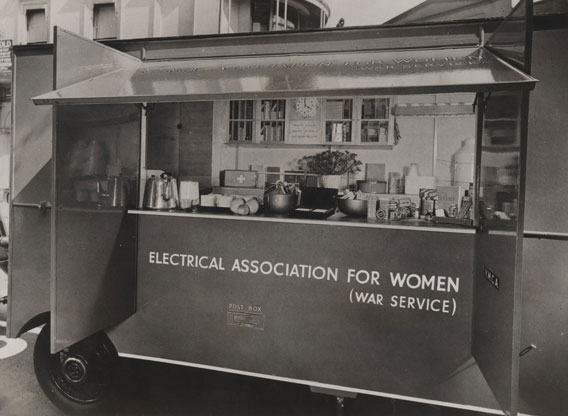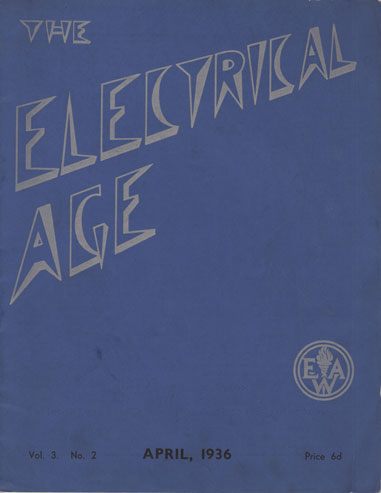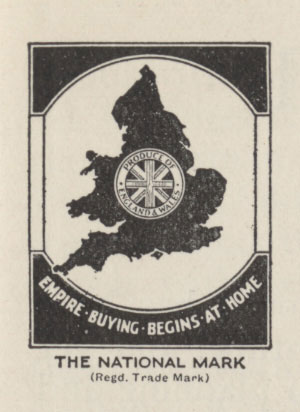Given the interest generated by the recent high profile news story, when it was suggested that some of the nations’ favourite recipes would no longer be available via the BBC website, we thought that we would delve into the archives of the EAW to find some recipes for those now looking for alternative sources of inspiration to occupy their culinary skills.
The History of the EAW

The Electrical Association for Women was formed as the Women’s Electrical Association at a meeting organised by the Women’s Engineering Society (WES) in November 1924. Dame Caroline Haslett, then Secretary of the WES, was appointed director, a position she held until 1956. Early in 1925, the organisation was renamed the Electrical Association for Women. Its aim was to encourage the use of electricity in the home to make women’s lives easier, and to encourage the design and production of cheap electrical appliances which they could use in the home.
The EAW grew rapidly, giving priority in its early years to the formation and guidance of new branches. Its first branch opened in Glasgow in 1925, quickly followed by others. The EAW spread overseas with the opening of EAW New Zealand in 1960 and EAW Trinidad and Tobago in 1961.
The EAW also saw education as important. After a request from the Board of Education, it organised summer schools for teachers for several years. The EAW established examinations on two levels (diplomas and certificates) for demonstrators and teachers. These became recognised qualifications. In 1936, the EAW Home Workers certificate was established, later being replaced by the Electricity for Everyday Living course. The Electrical Handbook, first published in 1934, became a recognised textbook for training purposes, and went through many editions and revisions.
The EAW originated and carried out numerous campaigns, the first of which, in 1928, was aimed at providing more socket outlets in homes. Campaigns included the design and performance of domestic electrical equipment, post-war reconstruction, air pollution and home planning. The EAW was represented on the committees of official bodies, such as the British Standards Institution, and at a local level on many electricity boards and Home Safety committees. The EAW was eventually disbanded in December 1986.
The Electrical Age (EAW Journal) and its Recipes

The EAW’s journal, produced quarterly at first, was called The Electrical Age. In addition to covering a wide range of topics associated with electricity in general and the use of electricity and electrical appliances in the home, the journal frequently included recipes that would benefit from the use of a particular appliance. A selection of these recipes, one from each of the first three decades of the organisations’ existence is reproduced below. If anyone feels inspired to follow any of these recipes, please be warned, we have tried none of these ourselves!
1920s Recipe – Peaches with Custard
This recipe is taken from the July 1929 issue of The Electrical Age (volume 1, no.13) and is taken from an article by Mary Mackirdy called, ‘The Electric Refrigerator – A Week-end Menu’. Mary Mackirdy, a lecturer at the College of Domestic Science, Glasgow, commented in the introduction, “I am certain that in the near future a refrigerator will be one of the accepted furnishings of a house and there will be no more worry as to whether the joint, cooked or uncooked, will keep fresh, no matter the degree of heat, that the butter will remain firm and the milk and cream sweet.”
Peaches with custard
A tin of peaches, some sponge cake, some chopped almonds and cherries, some good well-flavoured jam.
Mix the cake crumbs with the other ingredients, adding enough fruit syrup or liquid from the peaches to bind all.
Dry the peaches, fill the hollows with little balls of the mixture and lay on a dish flat side down: if the peaches are fairly small put the halves together. Cover the peaches with the following custard: – ½ pint milk, ½ oz cornflower, sugar, flavouring, 1 or 2 eggs, carmine. Mix the cornflower and milk and stir till boiling: beat the eggs with the sugar, sufficient to sweeten, beat in the cornflower and milk, add flavouring and a few drops of carmine. Decorate with fresh or crystallised fruit, or if a richer and more elaborate dish is desired, whipped cream.
Alongside this recipe was the refrigerator illustration shown below, which came with the helpful caption, “a modern electric refrigerator which can be used as a table”!

1930s Recipe – American Fried Chicken
This recipe is taken from the October 1935 issue of The Electrical Age (volume 2, no.22) and is taken from an article called ‘A National Mark Dinner’. The National Mark Scheme was set up in 1928 by the UK government and the Farmers Union. It was a voluntary scheme to try and provide a quality guarantee for a range of home-produced goods. The National Mark trademark is shown below.

The article began with the following paragraph;
“The economical housewife cannot be a philanthropist when purchasing food materials to satisfy her family’s hunger, but when it is possible for her not only economically to buy the best, but also to support her fellow countrymen and women by using their products, then it is the shrewd housewife who demands National Mark foodstuffs and thereby plays her part towards restoring prosperity to our country.”
Several recipes were then listed which had been taken from the National Mark Recipe Book produced by the Ministry of Agriculture and Fisheries, including the following recipe for American fried chicken.
American fried chicken
N.M chicken; Salt pork fat; Cream; and Milk
Cut the bird in pieces, wash them in cold water and drain, but do not dry them. Coat the pieces thickly with N M flour, pressing it well on; then fry them in plenty of salt pork fat (or bacon fat) till well browned and tender. Serve with a plain white sauce made with half milk, half cream.
1940s Recipe – Orange Meringue Pie
This final recipe is taken from the April 1949 issue of The Electrical Age (volume 5, no.2) and is part of an article called ‘Fresh Ideas for Easter’, by Marjorie Pilkington. Although the recipe shown below is for a dessert the introduction to the article made an interesting reference to peas;
“Fresh green peas are now available all year round with the advent of frozen foods. As cooking time is shortened and preparation time cut out altogether, 1lb of frozen peas is about equal to 2lb of high quality fresh-grown peas.”
Orange meringue pie
Pastry – 6oz self-raising flour, 3ozs fat, water, pinch of salt, 1 dessert spoon dried egg or 1 yolk of egg. Sieve flour, salt and dried egg, rub in fat and mix to a stiff dough with water. Line a glass pie plate or deep sponge tin.
Orange mixture – grated rind and juice of a large orange, 2-3 oz. sugar for mixture, 2-4 oz. sugar for meringue, 1 tablespoon cornflower or arrowroot, 1 teacup of boiling water, ½ oz. margarine, 1 or 2 eggs.
Blend cornflower with egg yolk, add boiling water, and return to pan to thicken. Add sugar and fat to hot mixture, then grated orange rind and juice.
When cool, pour into lined pie plate or dish. Bake at 400-425 degrees F. for 20-30 minutes till mixture is set and pastry just coloured. While this is cooking, whisk egg white stiff and fold in 1-2 oz. sugar for each egg white. When pie is almost cooked, put meringue mixture on top of pie in spoonfuls. Return to oven to set and just colour. This can be done with the oven heat switched off and the oven door ajar, otherwise the meringue will brown and not be dried out.
As a sign of the times in the same issue of The Electrical Age as the above recipe, Dame Caroline Haslett, EAW Director, is shown presenting an electric coffee percolator to Her Majesty Queen Mary when she visited EAW Headquarters on 23 March 1949. This image is reproduced below.

To discover more of the many hundreds of recipes that can be found in The Electrical Age, the EAW collection (archive reference NAEST 93) can be consulted at the IET Archives by appointment.
May 31, 2016 at 10:47 pm
Reblogged this on women engineers' history and commented:
And if you want to see this all brought to life, try watching the EAW films: Miss T and Mrs. T, based on the poem by Walter de la Mare:
It’s a very odd thing –
As odd can be –
That whatever Miss T eats
Turns into Miss T.;
Porridge and apples,
Mince, muffins and mutton,
Jam, junket, jumbles –
Not a rap, not a button
It matters; the moment
They’re out of her plate,
Though shared by Miss Butcher
And sour Mr. Bate;
Tiny and cheerful,
And neat as can be,
Whatever Miss T. eats
Turns into Miss T.
and
LikeLike